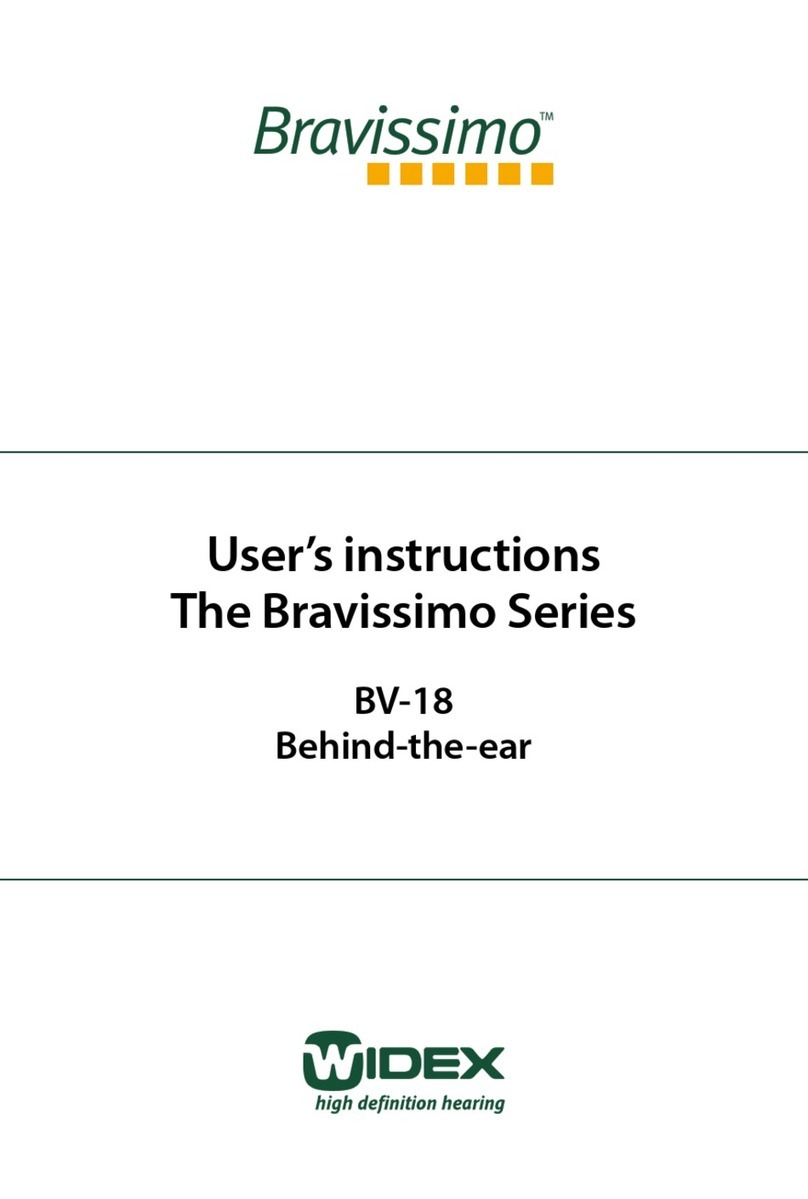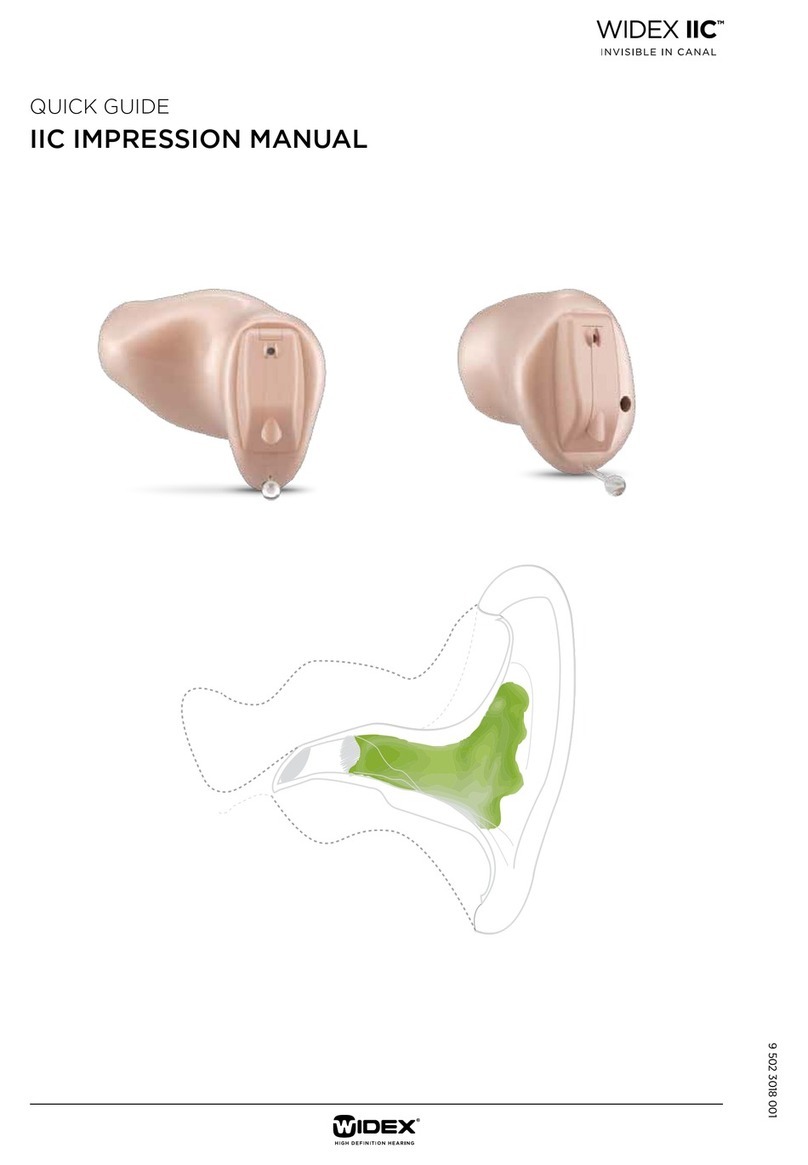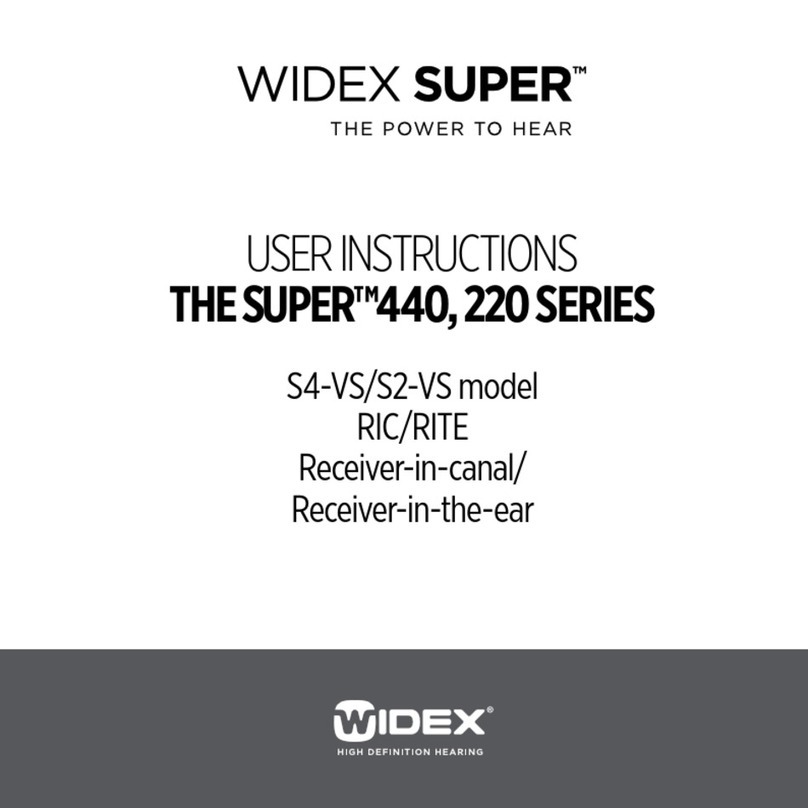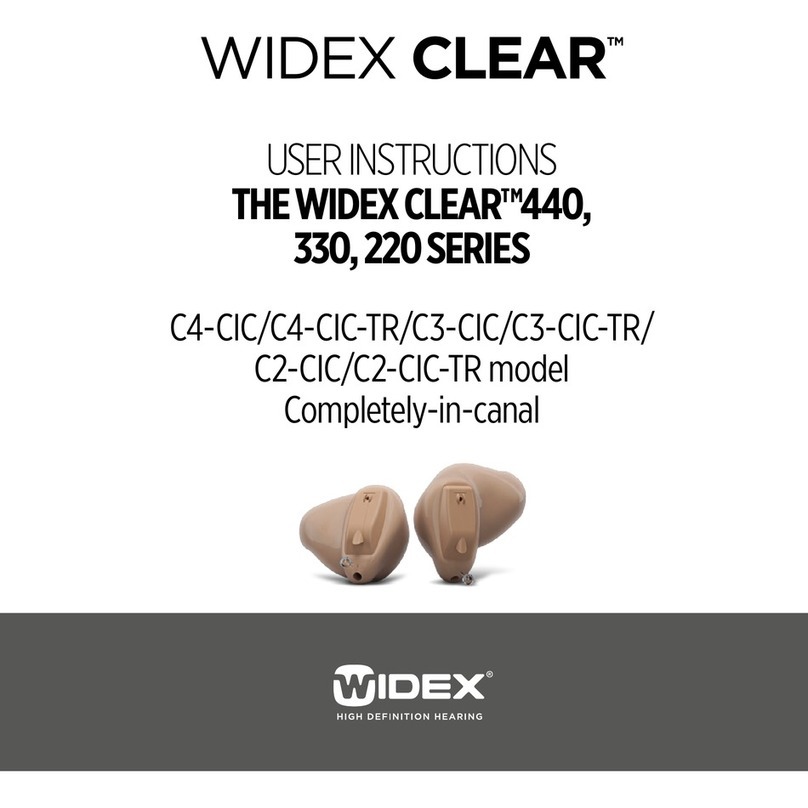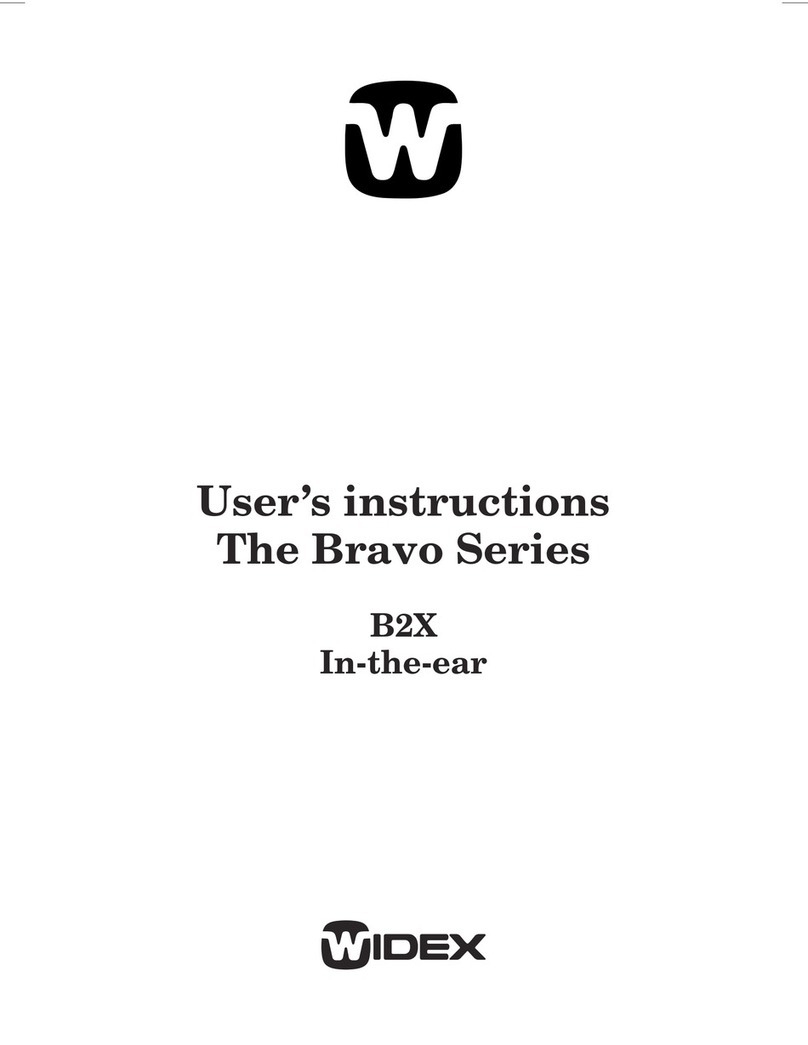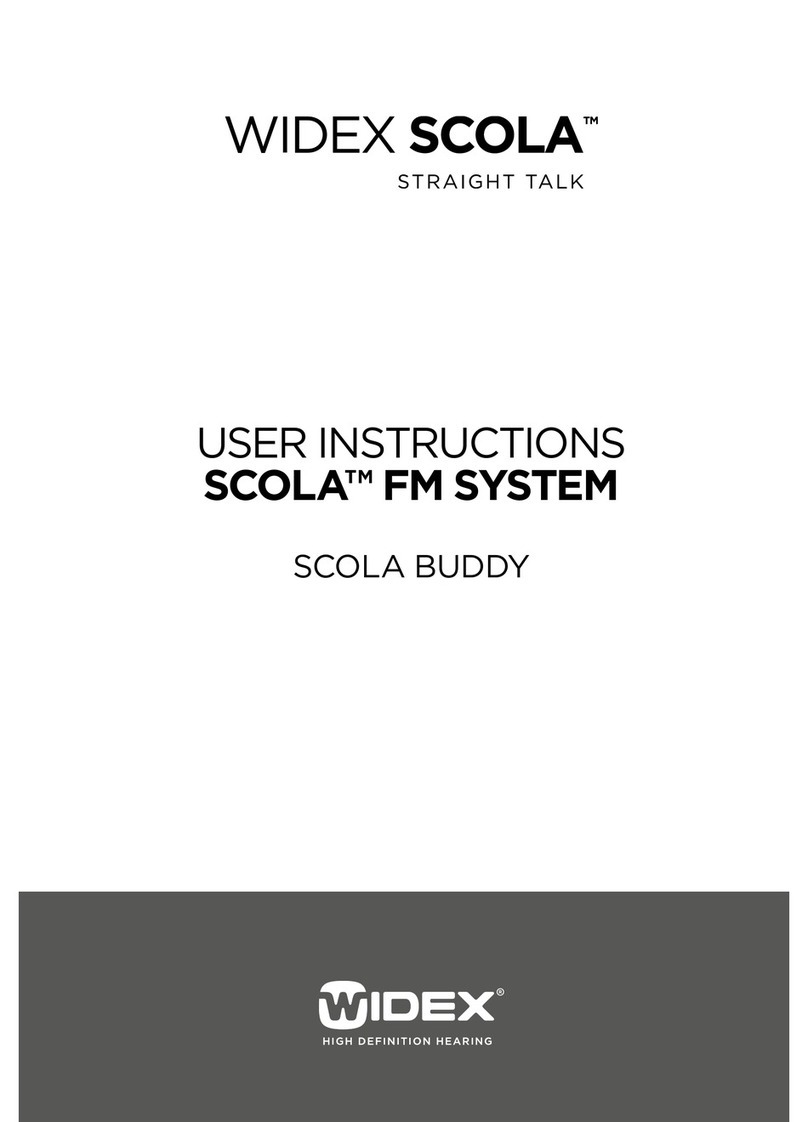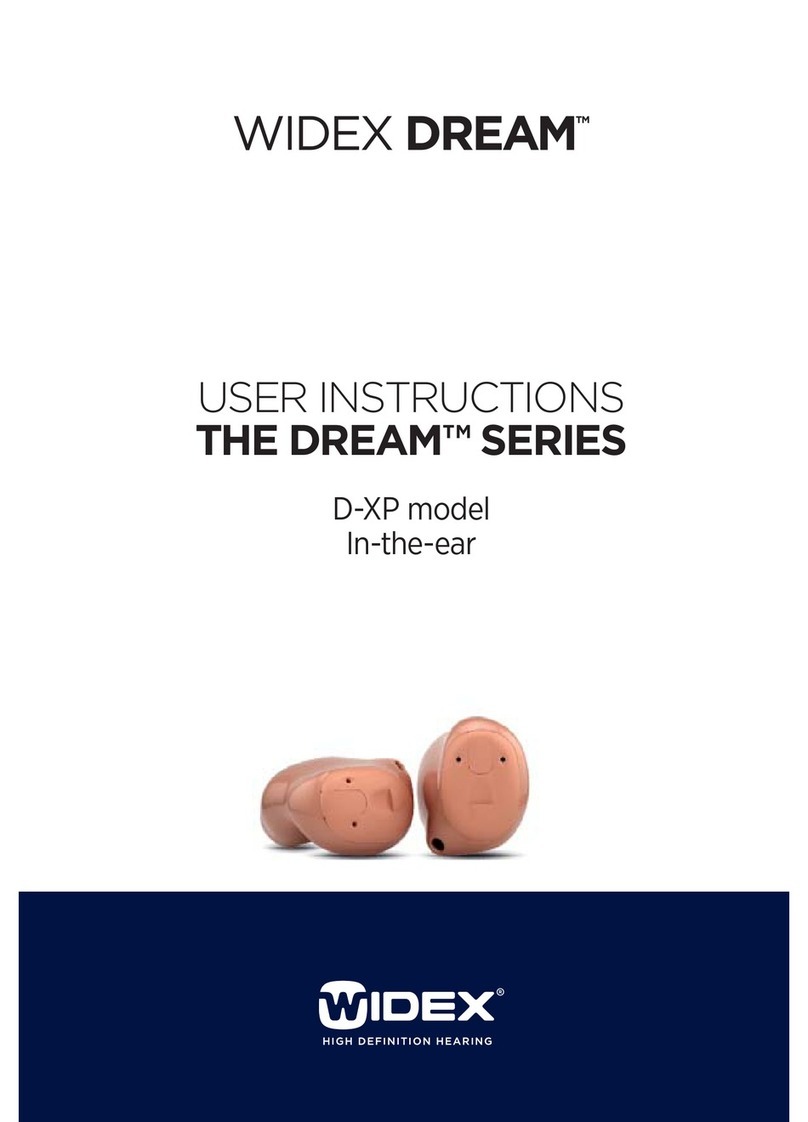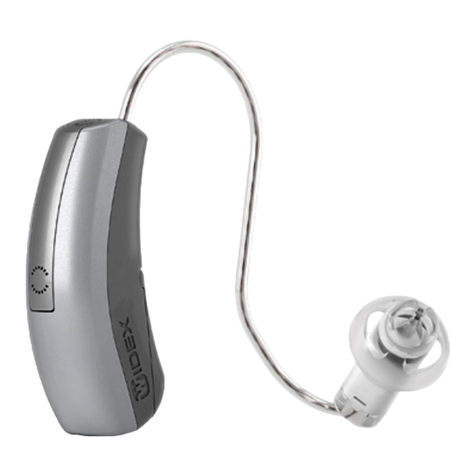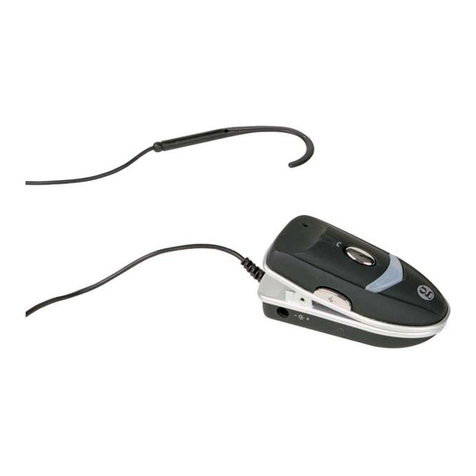6 7
Placing the battery in the
battery drawer
Before inserting a new battery
in your hearing aid, remember
to remove the adhesive tab. Do
not use batteries on which there
is a sticky residue from the tab
or other unwanted substance
as this can block the battery
airholes.
Insert the battery in the
special round holder built
into the battery drawer.
The battery is placed cor-
rectly when the flat side
with the little hole in the
middle is facing towards
the open face of the bat-
tery drawer. Most batter-
ies are marked with a
small plus (+). This plus
should face in the direc-
tion indicated by the
small plus (+) printed on the lower part of the
round battery holder.
Note: When opening the battery drawer, be care-
ful not to force it beyond the upright position (see
illustration).
If the battery drawer does not close easily, the
battery is incorrectly inserted.
Always place the battery in the actual battery
drawer and not in the open space inside the hear-
ing aid.
When changing batteries, hold the hearing aid
over a table or a carpet to make it easier to find a
dropped hearing aid or battery.
Exhausted batteries: If you hear four rapid
beep-tones while wearing your hearing aid, it is
an indication that you should exchange the bat-
tery as soon as possible as the battery is nearly
exhausted. Once the battery is totally exhausted,
the hearing aid will be completely silent.
Exactly how long the hearing aid will function af-
ter the beep-tones varies from one case to anoth-
er. We recommend that you always have a spare
battery with you.
The rate at which a battery loses power is depen-
dent upon the circumstances under which the
battery is used. In some circumstances, the bat-
tery can drain so suddenly that the beep-tones for
low battery warning will only be partially pro-
duced or not be produced at all.
Note: Never leave an exhausted battery in the
hearing aid. Leakage from exhausted batteries
may damage the hearing aid.
